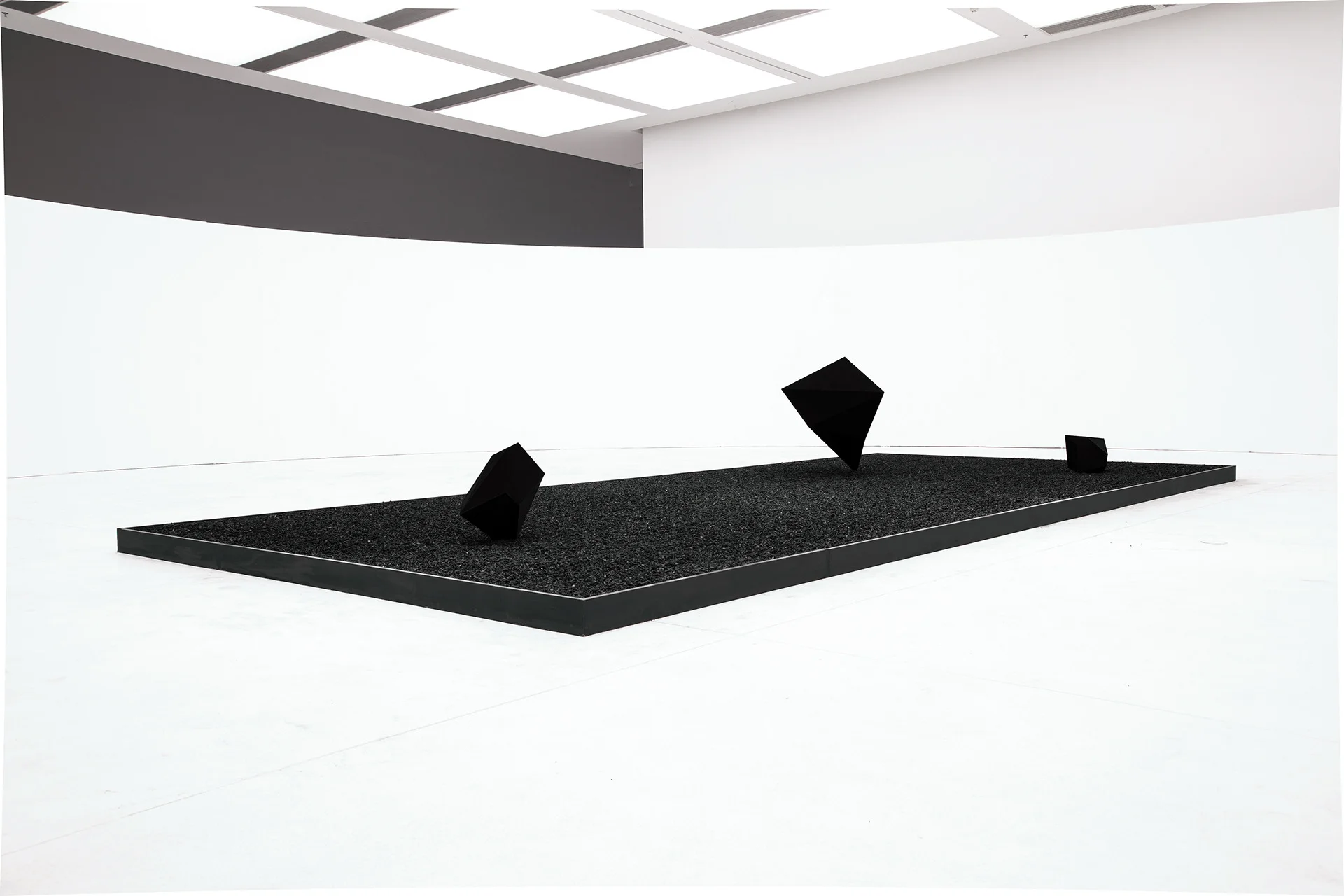
PROJECT
ZENBLACK
"World's Blackest Black" project using nanotechnology. Carbon nanotubes meet 1200-year lacquerware tradition—ancient craft revolutionized.

WHY
Color is one of the causes of difficulty in recycling.
Black is known to be a particular color in Japanese culture. This color symbolizes “wabi-sabi” (a traditional Japanese philosophy of appreciating the beauty of transience and imperfection), calmness, and depth beyond negative images. Although other countries view the color black as a misfortunate color, black in Japanese culture is a symbol of loneliness, tranquility, and profoundness beyond a negative image. Japanese culture includes black in places where the highest level of tranquility is required—for instance, Buddhist robes, Senrikyu black tea bowls, to black lacquerware. As Japan has established itself as a more technological country, industries such as automotive paint businesses have enhanced the technology for black over time. Even in the modern fashion industry, Yohji Yamamoto and Rei Kawakubo have influenced the impact of black color, as one of the most critical colors in Japanese beauty.
We decided to work on a consultation for a new black, using carbon nanotube (CNT) technology that is owned by the major Japanese paint manufacturer “Toyo Ink Group.” They had advanced in creating dispersion technology that dissolves into various liquids already. The underlying technology of CNT is the same as VANTA BLACK, which later became a hit worldwide.
At the time, we were branding new strategies for Echizen Lacquerware—Japan’s largest lacquerware production area. The local industry is full of challenges that affect our near future, such as a decline in sales, and lack of successors. As artisans age, we realized it is necessary to revive the industry with technology to continue the tradition for the future, finding a way to create a future for the color black and keep traditional craftsmanship with these two matters. Thus the project of producing Japan’s world-renowned black from the fusion of ancient times began.



HOW
The ultimate black color for a sustainable society.

We first decided to give this worlds’ top-level black a name that can express the depth and its indication in Japanese culture. After searching for dozens of words, we finally chose the name “ZENBLACK.” It holds the meaning of “black Zen” and “entirety of black.” The logo is made up of carbon hexagons and the symbol of “enso”–a Zen calligraphic technique when drawing a circle with one stroke.
As the first project for ZENBLACK to be displayed, we received a commission from Shenzhen Design Week to build a centerpiece at the entrance, where we decided to pay attention to the manufacturing industry.
ZENBLACK GARDEN is an installation using the world’s blackest ink “ZENBLACK” utilizing carbon nanotubes, as a “Kareisansui” (a traditional Zen garden with stones). It is a charcoal that is made of the same carbon atoms, highlighting the pure black effect of ZENBLACK, despite being the same black.
The ZENBLACK stones resemble a similar shape of an expanded grain of charcoal, which was then placed in mid-air, as if neglecting gravity, giving a sense of tension throughout the entire space. ZENBLACK, which had just released, was featured on various media platforms in China, making significant progress in Japan’s technology for international export.
Inspired by the stone garden of Ryoanji Temple (an iconic Zen temple) a “Kareisansui” (a traditional Zen garden with stones), we created this with charcoal, replacing the natural rocks with ZENBLACK pieces displayed in a Japanese-style. The exhibition received much recognition and grew popularity after being featured in various Chinese newspapers.
Furthermore, for our second project, we proposed a new black by fusing the technology of CNT dispersion with the lacquer craftsmanship. However, we realized that despite being soluble, the viscosity was too high that it did not mix well. After various experiments, we were able to produce a lacquer that combines both veneer and CNT. It is safe to say that the new varnish created from ZENBLACK is the blackest lacquer since it was introduced to Japan 1200 years ago. We decided to create a green tea bowl which is similar to the Kuroraku tea bowl used dearly by Senrikyu with this new lacquer.
One year after the start of the project, ZENBLACK became one of the key developmental projects of Toyo Ink Group as a result of these challenges. The plan of creating a new black is still underway.





WILL
The challenge for the world’s finest black continues.
Toyo Ink Group is one of the largest ink makers in the industry that studies various colors. Thus we consulted in exploring more technologies and techniques together. We proceeded the project with members from Toyo Ink Group and discussed how ZENBLACK could reach the world’s highest level. We found that we could produce extreme black not only from carbon nanotubes but also with other materials. ZENBLACK is not a single color, but a color that refers to nine different types of the “blackest black in the world” owned by Toyo Ink Group. Major Japanese companies have begun recruiting and preparing projects to develop applied intellectual property.
Also, Tachikawa introduced the possibility of an internal black such as applying it in the Alma telescope to Steve Pompea, an American astronomer whom he met personally.
The challenge for the world’s blackest black yielded from the connection of timeless traditions and innovation continues.
INFORMATION
- What
- ZENBLACK
- When
- 2018
- Where
- Japan
- Client
- Scope
- Branding / Branding stationary / Logo / Installation / Exhibition / Concept Development / Naming / Product / Concept Development
- Award
- FRAME Award: Final Round2019
- DSA Kukan Design Award: Best 1002019
CREDIT
- Art Direction
- NOSIGNER (Eisuke Tachikawa)
- Space Design
- NOSIGNER (Eisuke Tachikawa, Sui Fujikawa, Ryusei Noguchi)
- Graphic Design
- NOSIGNER (Eisuke Tachikawa, Ryota Mizusako)
- Product Design
- NOSIGNER (Eisuke Tachikawa, Niyen Lee)





